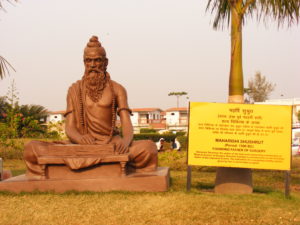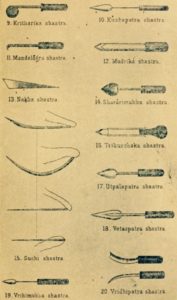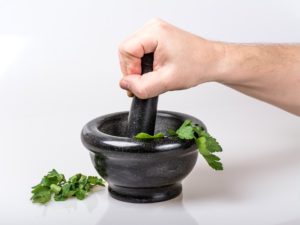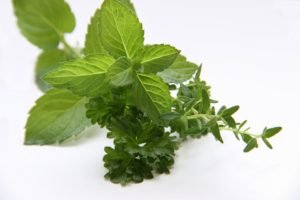Ayurveda Wellness And Disease Management
Ayurveda, the science of natural well being and longevity, aims at acquiring as well as maintaining your natural fitness and welfare. Also, it intends to do away with the disease or health issue you could be experiencing.
Ayurveda Focus
- Lot of emphasis has been placed on how the natural health of an individual can be regained.
- This particular medical Science of Ayurveda healing has elaborate divisions for providing the needed treatment to the diseased.

Ayurveda Disease Management: The Eight Departments
Ayurveda disease management is essentially holistic healthcare as well as curative science which incorporates eight different divisions or departments. These are particularly designed to provide complete healing for the specific area of ailment manifestation.
-
Kaya Chikitsa

This is the medicine department. The doctors deal with providing therapeutic medicinal cure to a patient who is suffering from an ailment like fever, jaundice, diabetes, epilepsy, etc.
2. Bala Roga Chikitsa

This is the pediatrics wing. This department takes care of kids and small children, while providing them with the needed comprehensive care. Another name for this department is Kumarya Bhritaya, as in Sanskrit language, Kumara denotes a small child.
3. Bhoota Vidya or Graha Chikitsa

It portrays the science of demonic seizures psychology, and deals essentially in treating mental and psychological ailments.
4. Shalakya Chikitsa

This deals mainly with patients suffering from diseases specific to the head and neck region (ear, nose, throat, mouth, and head). In easy terms, this is the ENT department of Ayurveda healing.
5. Shalya Tantra

This is the surgery department of Ayurveda. Kshara Karma is a popular surgical procedure that is being performed far and wide, mainly for treating patients with piles, hemorrhoids and fistula. Sushruta, the ancient Sage, is regarded as the father of surgery in Ayurveda science.
6. Agada Tantra

This is the toxicology division / department of Ayurveda which mainly treats those patients who have ingested some sort of poison or toxins. This relates to cases of a bite from a poisonous creature like a spider or snake.
7. Rasayana Tantra

This, the science of rejuvenation, is exceptional to Ayurveda system. Ayurveda herbal formulations and supportive treatment is provided to a healthy individual and aids in maintaining natural wellness and longevity. This also deals with anti-aging and immunity enhancing practices.
8. Bajikarna Chikitsa
This focuses on aphrodisiacs as another equally relevant discipline, which is taken care of as a separate department of Ayurveda treatment.
Ayurveda Treatment Based at Dosha Balance
- The three doshas are believed to be the base of Ayurveda treatment.
- Health and natural well being is the physical and mental result of balance in the states of all three doshas: vata, pitta and kapha.
- These doshas are easily influenced by stimulus and get to be thrown out of their natural balance.
How Dosha Imbalance Sets In?
- As and when the three doshas or the body humors lose their balance, disease has to manifest.
- Imbalance in vata, or the air humor, accounts for eighty types of diseases.
- while imbalance in the pitta dosha or the fire humor causes forty types of ailments.
- Likewise when kapha, or the phlegm falls out of balance, this results in twenty types of ailments.
- Therefore, restoring and reinstating the imbalanced doshas back into balanced state is the requisite for healthy living.
Various States of Dosha Imbalance
- Whenever some disease manifests within an individual, the three doshas – vata, pitta and kapha or the body humors are always in imbalanced state. This is broadly termed as Vishama Awastha, or the imbalanced stage of health.
- When imbalance is mainly due to increase or augmentation in the normal level, this aggravated stage of doshas is termed as Vriddha Awastha.
- When the imbalance or vitiation is due to decrease in the three doshas, then the decreased stage of doshas is known as Ksheena Awastha.
- Both increase as well as decrease in these doshas is further classified on the basis of high, medium and low levels.
- These imbalanced level of doshas attribute to the demonstration of the disease along with its signs and symptoms in the body of an individual.
Note: “Dr. Sonica Krishan is a wonderful Ayurvedic Practitioner and my Co-Editor at www.allthingshealing.com Here is an excellent article of hers regarding the many facets of Ayurveda. Enjoy!” – Julie Cerrato
Article Published Here
Watch Video: Introduction to Ayurveda (HD Video)
About the Author:
Dr Sonica Krishan is Author and Speaker in the areas of Healthy and Joyous Living through Ayurveda, Meditation, Yoga and other Contemplative practices. She is a leading Ayurveda Professional in India. She is also Health Writer, Columnist, Editor, Ayurveda Consultant and Holistic Healing Coach. Dr Sonica is open for National as well as International Collaborations with interested people / institutions in fields of Ayurveda, Meditation and Yoga.
Dr Sonica Krishan’s Books are available at Amazon
More Blogs:




